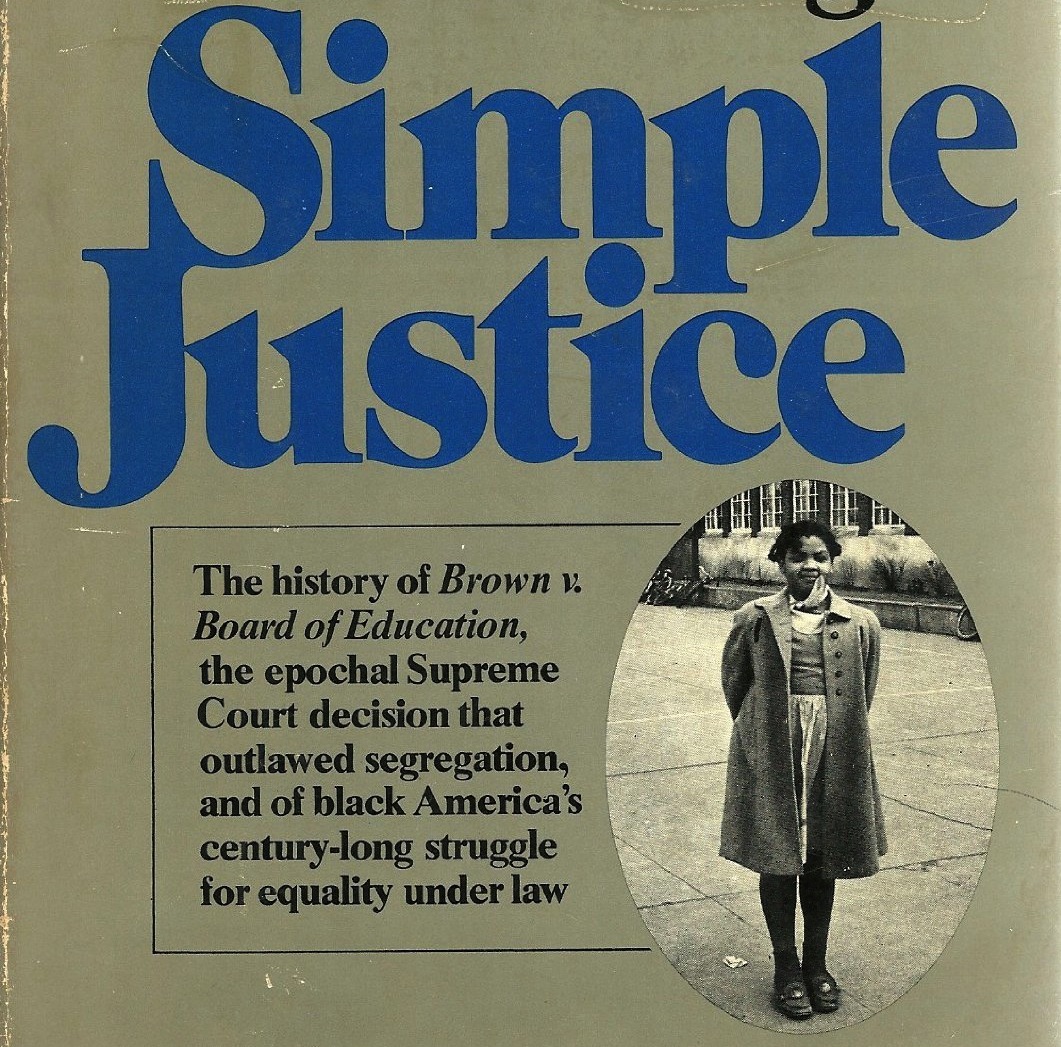In Inquiring Minds, contributors share a book, article, film, radio story or other media piece that changed the way they think about law and how it works in society.
I knew I was headed to law school when I started college, so I took all the courses that a pre-law student is supposed to take, including Constitutional Law and Civil Liberties. These courses were taught by a lawyer who had worked for the ACLU and the Center for Constitutional Rights during the Warren Court era. As we reviewed the landmark cases from the 1950s and 1960s, our professor told us – and I believed – that the Supreme Court led the expansion of civil rights and civil liberties in post-World War II America. I graduated from college and headed to law school believing that lawyers could be leaders in the effort to create social change. That faith began to unravel a bit when, in the summer between college and law school, I read Simple Justice by Richard Kluger.
In Simple Justice, Kluger portrays Charles Houston, Thurgood Marshall and their colleagues at the NAACP as brilliant legal tacticians. Many of them were trained at Howard University, whose law school was steeped in social justice. They were skilled lawyers, at home with both the complexities of constitutional law as well as the nuances of the local legal cultures where they litigated their cases. In their work to dismantle Jim Crow laws, they balanced many different demands and competing considerations to design a strategy that could leverage favorable precedents in “easy” cases in more difficult cases. And the campaigns that they mounted took years of effort – traveling to meet prospective clients, filing lawsuits, writing legal briefs, and lots of losing – before they bore any fruit.
Yet Kluger’s account makes clear that Marshall and his colleagues in the NAACP were only the lawyers. Lawyers can be leaders in campaigns for social change, but they occupy a relatively narrow slice of a social movement. Behind every Supreme Court opinion that expands or contracts constitutional rights, there are brave people who are living with the very real consequences of inequality and injustice in their daily lives and who are pushing back as hard as they can. The real heroes of Simple Justice were the African American parents, teachers, and community leaders who, in some cases, risked their lives so that their children could get a decent education. Although their stories are often invisible from the pages of a Supreme Court opinion, without their sacrifice and hard work, the law would never advance.
One of the most compelling figures in Simple Justice is Reverend Joseph DeLaine, a teacher and pastor in Clarendon County, South Carolina, who asked white school officials for a bus to take African American children to school. For this simple request, he was fired from his teaching job; his home and his church were burned down; shotguns were fired at his home, and when he shot back, he was charged with felonious assault. Indeed, Marshall translated the struggle of DeLaine and others in Clarendon County into the legal arguments that generated Brown v. Board of Education, but he did it by stripping away the violence suffered by the African American community. Thus, the legal process can redress injustice, but only in limited ways.
Simple Justice challenged the way that I thought about law and social change. Kluger showed me that cases reaching the Supreme Court were the product of years of struggle and hardship. The appellate briefs and Court opinions that constitute the texts of official legal institutions captured part of the story, but missed the dimensions of social change that were going on outside the courtroom and the work of activists for whom law could only ever provide partial solutions. Interestingly, the book got me to ask questions that occupy my research, even now.
For example, how do “cause lawyers” remain accountable to the communities they serve? In the 1950s, as Brown was winding its way through the courts, the NAACP was more of a grassroots organization that sponsored a full spectrum of social movement activities, organizing boycotts and protests, and making demands of local officials for political recognition and social inclusion. Local NAACP organizations brought complaints to the attention of the lawyers of the organization, like Marshall. Thus, the activists challenging injustice and the lawyers representing them were all under one organizational roof.
Remaining accountable to a broad social movement community is more challenging in our current political environment, especially since civil rights advocacy has become institutionalized. The proliferation of civil rights organizations has been accompanied by a division of labor. Organizations are now differentiated not just by the groups they serve, but also by the goals they pursue and the strategies and tactics they prefer. Legal rights organizations are often segregated from other social movement groups, and sometimes their superior access to resources means that lawyers can dictate the movement’s policy direction. And that can cause tension. The legal battle for same-sex marriage has commanded vast resources in the LGBT movement, but some vocal critics persistently asked over the years – why marriage? Is this the most pressing problem that the LGBT community faces? Why is participation in an outdated, inherently oppressive institution our overriding policy goal? If we believe that civil rights litigation plays a role in protecting minority rights and strengthening our democracy, then we ought to be attentive to the way these tensions get resolved in social movements.
Of course, now I understand that the relationship between law and social change is infinitely complex. That relationship depends on the structure of injustice and inequality in a given society and the opportunities available for challenging that structure. It depends on the resources and organizational capacity available in marginalized communities, and it depends on the courage and imagination of activists – lawyers, teachers, workers, parents, everyone – who fight back. I am grateful that I got a glimpse of that complexity in Simple Justice.









